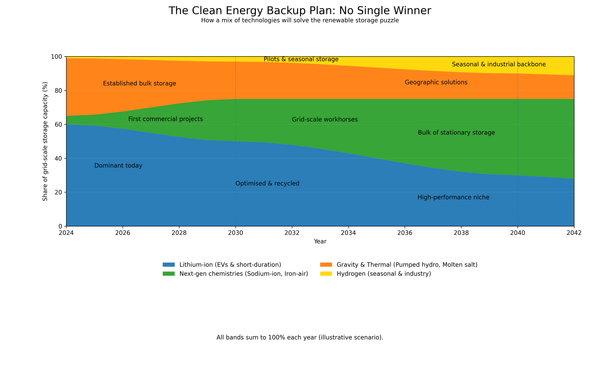We All Live in a Yellow Submarine (Until We Don’t)

Why your dream of an aquatic escape is destined for the dry dock.
My childhood media diet was rich in seawater: Voyage to the Bottom of the Sea, Stingray, Jacques Cousteau. The fantasy persists. Who hasn't dreamed of trading mortgages and noisy neighbours for a nuclear submarine, sailing submerged and independent forever?
Hold onto your periscope, Captain Nemo. That underwater escape plan is taking on water.
The Hidden Costs of Submarine Living
Nuclear submarines are masterpieces of engineering. They vanish for months, powered by reactors that laugh at a Tesla's range. They split seawater into oxygen, scrub CO₂ from the air, and turn brine into drinkable water. It's a self-contained bubble of ingenuity in an environment that wants to crush it.
But that bubble runs on borrowed time, and the loan sharks are nuclear physics and human psychology.
The Logistics Nightmare
- Food: Even the most advanced sub carries only limited rations. Without a technomagical replicator (which doesn't exist), you'll become intimately familiar with starvation.
- Maintenance: When a critical system fails—and it will—you can't call a repairman. The wear on the pressure hull has slightly more dramatic consequences than a leaky tap.
- The Reactor: Reactors wear out or need refuelling, and when that happens you can’t just ‘keep going’.
The Human Problem
Let's say you solve all that. Your biggest enemy remains: your own mind. Humans weren't designed for permanent life in windowless metal tubes. The psychological toll of sensory deprivation, no sunlight, zero privacy, and constant proximity to the same 150 people is immense. Mental health deteriorates faster than a reactor core.
Could We Build a True Underwater Civilization?
Maybe, but not as you imagine.
- The "Sealab-Plus": A stationary scientific habitat is possible. Think submarine life support meets space station comfort. Hydroponic gardens, large viewports, proper quarters. Price tag: more than an aircraft carrier, less than the ISS.
- The "Generation Ship": A truly self-sustaining colony is a paradigm shift. It requires a closed-loop biosphere: massive aquaponics, industrial recycling, ultra-redundant systems, underwater mining, and factories. It also needs a genetically viable population (500-1000 people), schools, hospitals, and a culture. This is a 100-year project requiring a vast portion of the world's resources.
The Science Fiction Solution: Redesigning the Crew
The conversation turns sci-fi if the crew isn't "human" as we know it. What about people genetically modified for confinement, cybernetically enhanced to process isolation, or AI that views endless depth as a Tuesday? Your biggest obstacle becomes your biggest advantage. No cabin fever, no breakdowns—just perfectly adapted minds treating a metal tube as a penthouse.
Timeframe? Another 50-150 years. No big deal.
The Real Point: This Was Never About Submarines
Here’s the truth: I tricked you.
Not because I’m a mean—because I needed you to see the punchline.
If surviving indefinitely in a nuclear sub—floating in Earth’s oceans, with oxygen, water, gravity, and rescue just hours away—is basically impossible…
…then what chance do we really think we have on Mars?
Mars: The Ocean's Psychopathic Cousin
Every submarine problem is multiplied by a factor of 100 on the Red Planet – the world is a war.
- Environment: Mars doesn't just crush you; it freezes, suffocates, and irradiates you, millions of miles from help.
- Resources: Underwater, you're surrounded by H₂O. On Mars, you must extract toxically salty water from frozen soil using energy you don't have.
- Energy: A sub's reactor is cooled by an entire ocean. Mars's thin atmosphere is a poor substitute, with solar power weakened by distance and crippled by dust storms.
- Transportation: Getting to sea requires a champagne bottle. Getting to Mars requires overcoming the merciless maths of rocket science.
- Gravity: This is an fundamental Mars/Moon/space problem. We have no idea what 38% (or less!) Earth gravity does to the human body over a lifetime. It’s a generations-long medical experiment with no exit strategy.
The Upgrade Timeline
So when do we get crews who can handle these physical challenges? A wildly optimistic (or unethical, illegal, reckless... please, take your pick!) guess:
- 2030s-40s: Genetic editing and brain-computer interfaces mature.
- 2050s-70s: The first humans enhanced for isolation and resilience are born.
- 2080s onward: Post-human crews, psychologically adapted for Mars, become conceivable, with initial physical adaptations largely based on informed guesswork.
Conclusion: Evolution or Cosmic Selection?
A nuclear submarine proves one thing: we can build bubbles that keep us alive for a while. But “for a while” is not a civilisation.
Mars—and beyond—won’t be conquered by humans as we are. Only by redesigning ourselves—genetically, cybernetically, or with AI partners—does “impossible” shrink to “merely insane.”
The real frontier isn’t the habitat. It’s the crew.
Maybe we can all live in yellow submarines for now… but the ones who reach the stars might not be human at all.
Postscript
Despite the absolutely incredible challenges, Mars is actually a fantastic opportunity for a would-be space-faring species like humans (or what we might become) – a rocky world with bearable gravity, solar power, and conditions close enough to our own biosphere that adapting to them is imaginable.
Most of all, it's barren (or, at least, we bloody well hope it is!).
If it had life of its own, we would compete with it and it with us, quite likely resulting in the destruction of both.
So, think of it this way: if we don't make Mars our second home, maybe somebody else will...




